DennyDevHE77
Hazard to Others
  
Posts: 149
Registered: 15-9-2014
Member Is Offline
Mood: No Mood
|
|
Minimum difference between plastic explosives?
Detonated two samples of plastic explosive yesterday. On the first photo the outermost pancake ~50g with composition PETN + (polybutylene - 85%,
polyisobutylene - 15%), 88/12. The pancake in the middle is already 90/10 of the same composition ~50g. But the main difference in density, the
outermost has a density of 1.43, and in the middle 1.55. Why with such a big difference in density the result is almost identical? Why is the input
hole from 88/12 larger than from 90/10 (visually). And the output hole is conversely larger from 90/10? It might be worth blowing up a molded ETN
tablet nearby to see the difference for sure.... If anything, the thickness of the steel plate is 7mm
P.S. The syringe on the right is phlegmatized PETN with a density of 1.19. I didn't expect much from it. I should have gotten rid of the extra PETN,
but I couldn't throw it away.
P.P.S. By the way, 2.5 mm medical drip tubes worked perfectly (as detonating cord), even considering that the PETN in them was of bulk density.
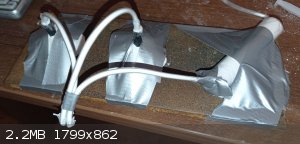 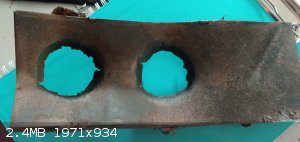 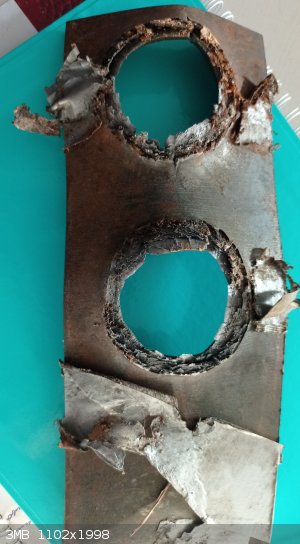
[Edited on 1-10-2023 by DennyDevHE77]
|
|
|
Sir_Gawain
Hazard to Others
  
Posts: 279
Registered: 12-10-2022
Location: Due South of Due West
Member Is Offline
Mood: Yes.
|
|
Perhaps the slightly higher density is countered by a lower concentration of HE. Also, the measuring method (comparing two jagged holes in a piece of
metal) is not nearly precise enough to detect such small differences (~8%)
“Alchemy is trying to turn things yellow; chemistry is trying to avoid things turning yellow.” -Tom deP.
|
|
|
DennyDevHE77
Hazard to Others
  
Posts: 149
Registered: 15-9-2014
Member Is Offline
Mood: No Mood
|
|
What does it mean to have a low HE concentration?
Just a question because many friends have told me that most commercial plastic explosives, as well as most homemade ones, have low densities (around
1.4), and overall power at TNT levels. The same friends insisted that plastic must necessarily be made at the industrial level, i.e. with densities
> 1.53 and fill factor 0.9-0.92. Since the difference (according to them) will be huge, an extra 50-70 kbar. But as it turned out the difference is
barely visible visually, I wrote above that the average charge was density 1.55. In fact, it was 1.6, just 1.55 is the minimum I could measure. In
fact, it's almost the level of C4.
And it turns out, to bother so much (proper grinding and fractionation of crystals, long and high-quality mixing), does not make sense, as the profit
is not much. Moreover, plasticity and formability of the composition 10/90 is much less than 12/88.
Although crystals probably still need to be ground, they are very large. I will give two photos below, crystals from acetone by rapid dilution (some
1.5 mm). And ground in a mortar. By the way, it is not dangerous at all, you do not need to grind for a long time, and the pressure on the pestle
should not be too much. As I found information in the network, PETN at strong pressure on the pestle clicks, and at very strong pressure, when from
the mortar can already fall off pieces, PETN detonates. I have also tried grinding wet PETN, but the grinding quality (subjectively) is worse.
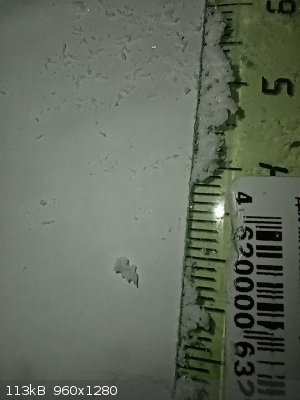 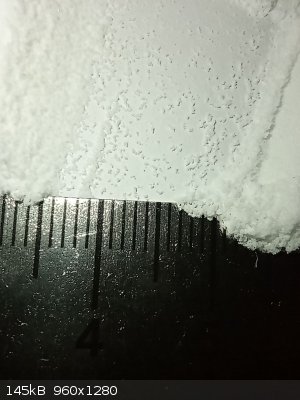
|
|
|
EF2000
Hazard to Others
  
Posts: 113
Registered: 10-5-2023
Location: The Steppes, now trapped in the forest zone
Member Is Offline
Mood: wrooom
|
|
Try better testing methods
The problem isn't in plastic explosives. It's in plate dent test.
When explosion penetrates plate, all the energy goes into new hole and dissipates behind it. That's great when you need beyond-armor effect (shoutout
to KV-2 and Sturmpanzer 2, blasting holes in hull roofs since '40s).
But not so great when you need to compare so close compositions. If difference in power is significant (like TACP vs TACN), holes would be different.
If it's just few percents, not so.
For accurate comparison you need to capture more energy of explosion in witness plate. You need to shoot into soft metal like aluminium or lead and
compare craters produced.
Quote: Originally posted by Laboratory of Liptakov  | Of course, that bigger amount will give more exact results and exact measurement of density. I estimate that 5g will enough. Diameter of high pressed
EM of cylinder should by in this cause 12 - 15 mm at 5 g.
However alu brick must be a lot bigger. Which can be expensive. For 5g I reccomend using lead block of diameter 70 mm and 60 mm high.
Which is possible use repeatedly after casting. And measurement can be on 0,1 mm. Not on 0,01 mm.
Lead block is possible use also for measurement longer charge in cavity 7 mm / 5g. With less exact results. Advantage of lead is his huge dynamic
resistance of entire block.
But 5g require testing chamber minimal 70 x 70 x 70 cm with wet sawdust.
[Edited on 12-2-2022 by Laboratory of Liptakov] |
Quote: Originally posted by Laboratory of Liptakov  | Lead block is pretty good compromise for comparative testing.
However during measurement, in same block, is necessary always create reference impact from known EM. As reference is here CHP.... ...LL ...LL |
|
|
|
Microtek
National Hazard
   
Posts: 830
Registered: 23-9-2002
Member Is Offline
Mood: No Mood
|
|
@ Denny: Some of your friend's assertions are quite simply wrong. You can absolutely prepare plastiques in the amateur lab with a higher density than
1.4 g/ml, and commercial plastiques are more often in the 1.5-1.6 g/ml range.
What EF2000 says is true; you can't really judge the explosive power by the size of the hole. You could repeat the test with a number of different
amounts of plastique to find the minimum amount required to penetrate the plate, but you would need a standardized way to arrange your charge to
ensure comparable thickness and thus acceleration path of the charge. The advantage of going with the Al or Pb block test is that you don't have to do
as many tests, since you can measure the depth or volume of the cavity instead.
Also, I have to wonder how you do "rapid dilution" precipitation of PETN. If you pour the acetone solution into chilled water with agitation, you
should not be left with 1.5 mm crystals.
[Edited on 2-10-2023 by Microtek]
|
|
|
DennyDevHE77
Hazard to Others
  
Posts: 149
Registered: 15-9-2014
Member Is Offline
Mood: No Mood
|
|
Quote: Originally posted by Microtek  | Also, I have to wonder how you do "rapid dilution" precipitation of PETN. If you pour the acetone solution into chilled water with agitation, you
should not be left with 1.5 mm crystals.
|
I meant that when you pour a large amount of water into a solution of PETN in acetone, the crystals fall out as needles, and very large ones. 1-1.5
millimeters.
When pouring a solution of PETN in acetone in water, the crystals are much smaller, but they are still in the form of needles, and do not quite fit
the plastic explosives. As I understand it, the best combination is about 40% of 0.05 mm crystals, and 60% of 0.2 mm crystals.
On one site when googling, I found the following information
For a blend of 90-90.5% RDX, 3.5-4% fluoroorganics, and the rest is dibutyl phthalate:
1) RDX fraction <50µm 90% density = 1.38 g/ml [VoD 7220 m/s]
2) RDX fraction <50µm 45%, 200-250µm 45% density = 1.54 g/ml [VoD 7690 m/s]
3) RDX fraction <50µm 26.82%, 200-250µm 63.64% density = 1.58 g/ml [VoD 7920 m/s]
4) RDX fraction <50µm 26.82%, 120-200µm 63.64% density = 1.55 g/ml [VoD 7710 m/s]
5) RDX fraction <50µm 26.82%, 80-120µm 63.64% density = 1.51 g/ml [VoD 7640 m/s]
6) RDX fraction <50µm 38.5%, 100-300µm 51.95% density = 1.67 g/ml [VoD 8130 m/s]
Although this is of course fluoroorganics, and exotic for the home chemist, I think with hydrocarbon/fatty acid salt mixtures, or PiB, the difference
would not be particularly large
[Edited on 3-10-2023 by DennyDevHE77]
|
|
|
MineMan
National Hazard
   
Posts: 998
Registered: 29-3-2015
Member Is Offline
Mood: No Mood
|
|
Don’t grind PETN in a motor. Just do not
|
|
|
EF2000
Hazard to Others
  
Posts: 113
Registered: 10-5-2023
Location: The Steppes, now trapped in the forest zone
Member Is Offline
Mood: wrooom
|
|
Acetone can be too strong solvent. Maybe you can try something milder, like ethyl acetate?
It's safer also, and has a pleasant smell as additional bonus (used for flavoring "pear drops" sweets).
|
|
|
DennyDevHE77
Hazard to Others
  
Posts: 149
Registered: 15-9-2014
Member Is Offline
Mood: No Mood
|
|
I would agree with this for ETN, there really, acetone is needed in very small portions. But not for PETN. In 100g of acetone, 58g of PETN dissolves
at 50°C. Ethyl acetate dissolves 18g at 50°C.
In practice, 100g of PETN is usually recrystallized from 340-350 ml of acetone. This is even less than we would like. Especially for me. Sometimes I
make about a kilogram of PETN per week, and acetone is a very significant cost for me (more expensive than sulfuric acid). Moreover, due to lack of
time I can't regenerate it (as well as sulfuric acid), so it's a consumable for me. And ethyl acetate will be even more expensive.
I was trying to get rid of the need for recrystallization the way the industry has already invented it. Namely, rub PETN with a small amount of chalk,
this removes most of the intracrystalline acid, and results in a relatively stable product. But the problem is that the PETN obtained from the
sulfur-nitrogen nitrate mixture is already extremely fine crystals, which are difficult to crush further, and these crystals are also unusually
difficult to dry; at room temperature they remain wet after four days. This requires either a dryer with fans or an oven, for example. But I do not
have the former, and the oven gives out at least 100°C, which is too much for PETN.
Finally, such crystals are not suitable for plastic compositions, as they give low density (1.3). They should either be mixed with ammonium nitrate,
or alloyed with something.
[Edited on 3-10-2023 by DennyDevHE77]
|
|
|
Etanol
Hazard to Others
  
Posts: 141
Registered: 27-2-2012
Member Is Offline
Mood: No Mood
|
|
Are you sure that your charges had such a density? Homemade plastic compositions have variable density depending on pressure. Much depends on the
shape of the charge. This is too thin steel for such mass.
Test your mixtures in syringes, placing them end up on the plate. This way you can control both density and shape.
Try recrystallizing purified PETN from ethyl acetate. Really. Do this only by heating and cooling without diluting with water. Cubic crystals should
fall out according to Urbanski, not needle-shaped ones.
|
|
|
Microtek
National Hazard
   
Posts: 830
Registered: 23-9-2002
Member Is Offline
Mood: No Mood
|
|
Those are some hefty batch sizes. What do you do with all that PETN? Regarding precipitation of PETN from acetone soln: Have you tried pouring the
acetone soln into rapidly agitated chilled water? The acetone should be added slowly and agitation should be much faster than you can manage by hand.
This way, I find that the crystals formed are rounded rather than needle shaped.
|
|
|
DennyDevHE77
Hazard to Others
  
Posts: 149
Registered: 15-9-2014
Member Is Offline
Mood: No Mood
|
|
I measured the density by taking 10g from the bulk of the plastic, and measured them first by volume displacement in a beaker and then by mass in a
syringe, so-so I'm confident in the density. But it was a small sample, and the whole charge (50g) was just pressed against a steel plate, so of
course the density was already uneven in it
I will try this just to see what they look like, these very cubic crcitals  But I
don't expect any special properties from them. By the way, in ethyl acetate it is possible to remove intracrystalline acid with soda? But I
don't expect any special properties from them. By the way, in ethyl acetate it is possible to remove intracrystalline acid with soda?
And what charge would be normal for a 7mm plate?
|
|
|
DennyDevHE77
Hazard to Others
  
Posts: 149
Registered: 15-9-2014
Member Is Offline
Mood: No Mood
|
|
Quote: Originally posted by Microtek  | | Have you tried pouring the acetone soln into rapidly agitated chilled water? The acetone should be added slowly and agitation should be much faster
than you can manage by hand. |
Honestly I have never even heard of this method, that is, as I understand, you need a fast stirrer (mechanical or magnetic), and into cold water thin
stream pour acetone solution PETN?
[Edited on 4-10-2023 by DennyDevHE77]
|
|
|
DennyDevHE77
Hazard to Others
  
Posts: 149
Registered: 15-9-2014
Member Is Offline
Mood: No Mood
|
|
That's not true at all. That sounds like a lot. But 1 kg of PETN is 5 200g bags of the same plastic. That's ~130 cm2. So it fits in the palm of your
hand. Or it's a good sensitizer for ammonium nitrate explosives, say at 20% it will provide almost trouble-free detonation. But 20% for 1 kg is 5 kg
of ammonium nitrate explosives, that is one more or less thick tree. That is one or several kilograms, it will be fine if you make firecrackers from
it 50-100g, to make noise on holidays, for example. Or, if you are using PETN exclusively for detonators, then yes, 1 kg will last for a very long
time. (for example, at my school, PETN was very much appreciated in our circle of friends, as it allowed us not to make 20-50g detonators from organic
peroxides for ANFO and dynamons). But when the task of demolishing something you need large quantities. For example, in the test above, if I wanted to
split a steel plate into two parts, I would need a longitudinal charge, and it would be much longer and bigger. And in pure form, I've dropped PETN
before, but there's no point in blowing it up like that, coarse-crystalline can be compacted to ~1.0. And needle fine-crystalline to 0.8. In general,
it is better not to use it clean without hydraulic press.
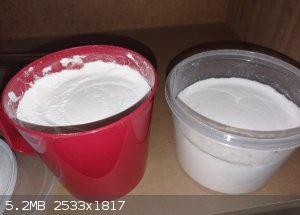
[Edited on 4-10-2023 by DennyDevHE77]
|
|
|
Microtek
National Hazard
   
Posts: 830
Registered: 23-9-2002
Member Is Offline
Mood: No Mood
|
|
If yoy don't have access to a fast stirrer, you can just slow down the addition rate of the acetone solution (but for stirring you can just use a hand
mixer from the kitchen supply).
I stand by my statement that bucketfuls of PETN is a hefty amount. Here on SM we generally don't work with such large amounts (I usually confine
myself to 1g charges at most, and many others work at the 5-10 g scale). This is plenty since most of us do not use our HEs to actually demolish
things, but rather for research and development.
|
|
|
Etanol
Hazard to Others
  
Posts: 141
Registered: 27-2-2012
Member Is Offline
Mood: No Mood
|
|
No. Ethyl acetate will decompose.
Reduce the charge diameter to 20-25 mm to see the difference.
|
|
|
EF2000
Hazard to Others
  
Posts: 113
Registered: 10-5-2023
Location: The Steppes, now trapped in the forest zone
Member Is Offline
Mood: wrooom
|
|
Remember folks: if you are doing research, not demolition of some secret superweapon's hangar, stay at at such quantities as in attached picture.
Jokes aside, I guess the additional advantage of recrystallization from ethyl acetate is that solvent can be almost losslessly recycled, right? Since
it's not diluted with water, simple distillation and it's ready for another batch, isn't it?

|
|
|
DennyDevHE77
Hazard to Others
  
Posts: 149
Registered: 15-9-2014
Member Is Offline
Mood: No Mood
|
|
In fact, I have an old tin-sheet shed that I would like to demolish, but not with a non-contact single explosion from the inside (it would then be
scattered for hundreds of meters), but to demolish it the way decommissioned ships and planes are dismantled, with elongated shaped plastic charges.
Well, these are plans for the future.
About ethyl acetate. I need acetone mainly to remove intracrystalline acid (with baking soda) to provide stability for PETN, but Ethanol above writes
that I can not do it in it. Besides, acetone can also be distilled, in rectification columns, to 98%, right? And nitric acid can be distilled, and
sulfuric acid can be evaporated, and in fact, in general, to provide almost waste-free production cycle. But I wrote above that such regeneration is
very demanding on free time, which I do not have.
|
|
|